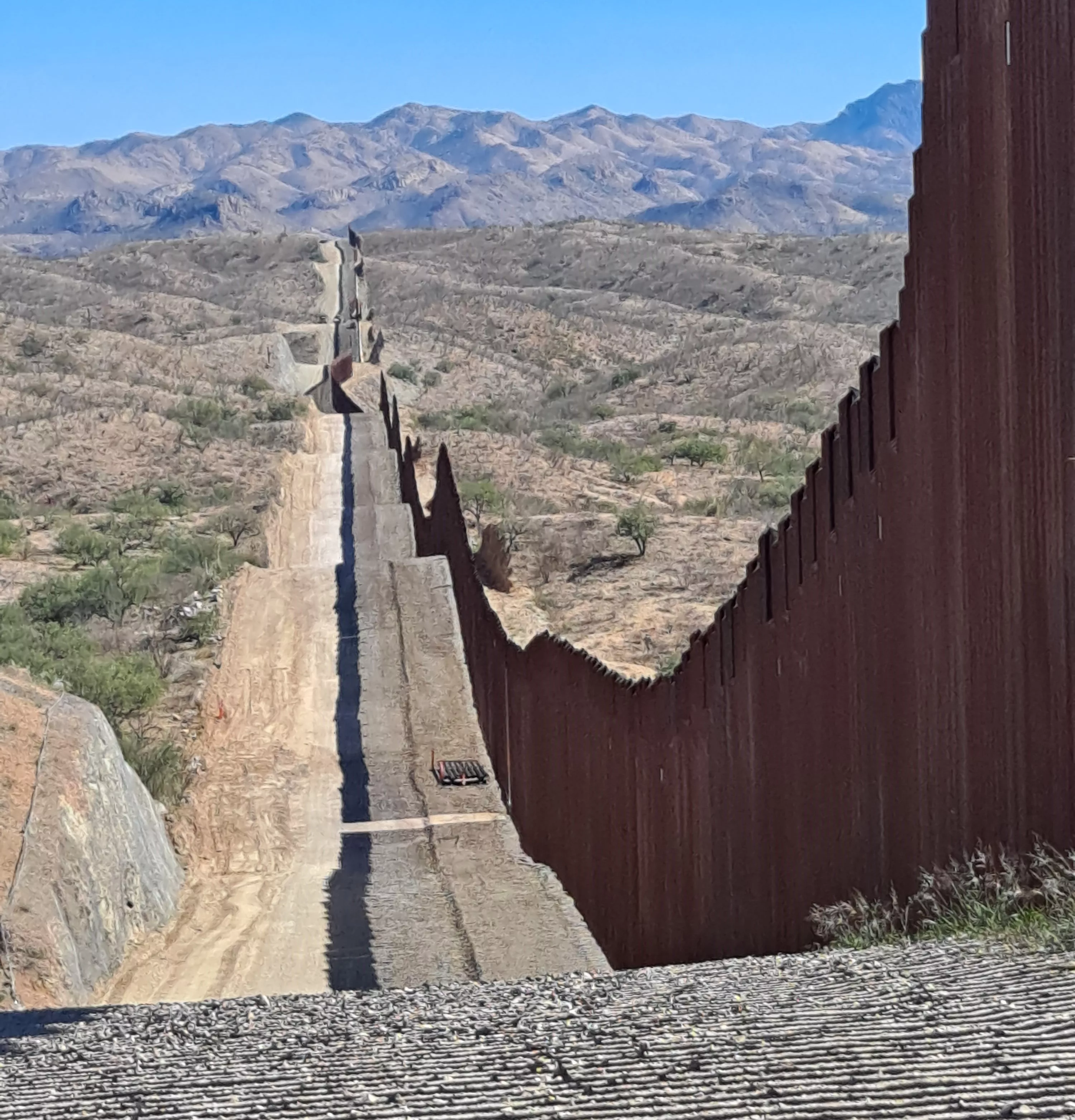
VALLEY CITY, N.D. (NewsDakota.com) – A lecture at the Barnes County Museum on Thursday, February 1 was sponsored jointly by the Barnes County Museum Lecture Series and by “What in the World Is Going On?” Nancy Farnham from Enderlin gave a report of a visit she made with a church group from Eastern ND to the US-Mexico border, near Nogales AZ. Farnham described how La Casa de Misericordia (house of mercy), a group of volunteers near the border, offer support to potential immigrants, most of whom are in dire financial and social condition, as they wait through the difficult process of crossing into the U.S. under asylum or other immigration laws.
The majority of the lecture was intended to dispel some of the myths that are heard commonly now that the border has become a daily topic of conversation. One myth is that many of the border-crossers are drug smugglers. She said most people crossing the border are desperate people, usually young, and often with young children, even babies, that are escaping poverty, or more commonly violence in their communities of origin. Sometimes this violence is the result of political unrest, but often it can be from gang violence from the drug trade, which she reminded everyone is a result of the lucrative drug market caused by drug use and abuse in the U.S., not in Mexico.
Another one of the myths she dispelled was that there could simply be an impenetrable 1900 mile wall. Besides being astonishingly expensive to build, it restricts animal migration and is very much opposed by residents on both sides of the border. The wall is very visible in urban centers where most of the commercial traffic crosses, and she said only 5% of cargo is inspected, so that most of the drugs entering the U.S. are not by Mexicans but smuggled in cargo or carried by North Americans returning to the U.S. with at least 90% of fentanyl being carried across legal entry points by Americans. Away from the urban centers, they visited places where there is no wall at all or there are fences deteriorating and easily crossed.
She said people would usually like to cross legally, with “papers”, but this process is extremely back-logged because of the huge shortage of immigration judges, and the very strict requirements for asylum. Shockingly, she says threats of violence from gangs or domestic partners does not qualify one for asylum unless the threat is because of identity factors such as race, religious or ethnic origin, or because of political views. This leaves out many people who nevertheless wait at the border to be picked up by U.S. border agents, because U.S. and international law require that having set foot on U.S. soil, they have the legal right to present their case for asylum to a court.
For many this is simply an act of desperation, knowing their slight chances of being granted asylum. Refugee status is different from immigration status Farnham described, but also difficult for border-crossing people to obtain. The key to unlock the door is often having family in the U.S. capable of receiving and housing them. For this and other reasons, many people simply cross the border and keep going across the life-threatening wilderness hoping to survive and
becoming “illegal immigrants” but at least surviving. However, many do not survive this journey, so shelter volunteers put out water stations to prevent some deaths, and sometimes erect memorials for those who did not survive. Farnham had pictures of these activities. She also had pictures of a few young couples with infants or young children who were waiting in the support centers, and reported that within a few days they received notice through “the grapevine” that a few of them had obtained entry and were on their way to fighting their way through the immigration process. Many times during her talk, Farnham reminded the audience that “these people are like you and me, they just want a safe place to live and work and raise their families.”
